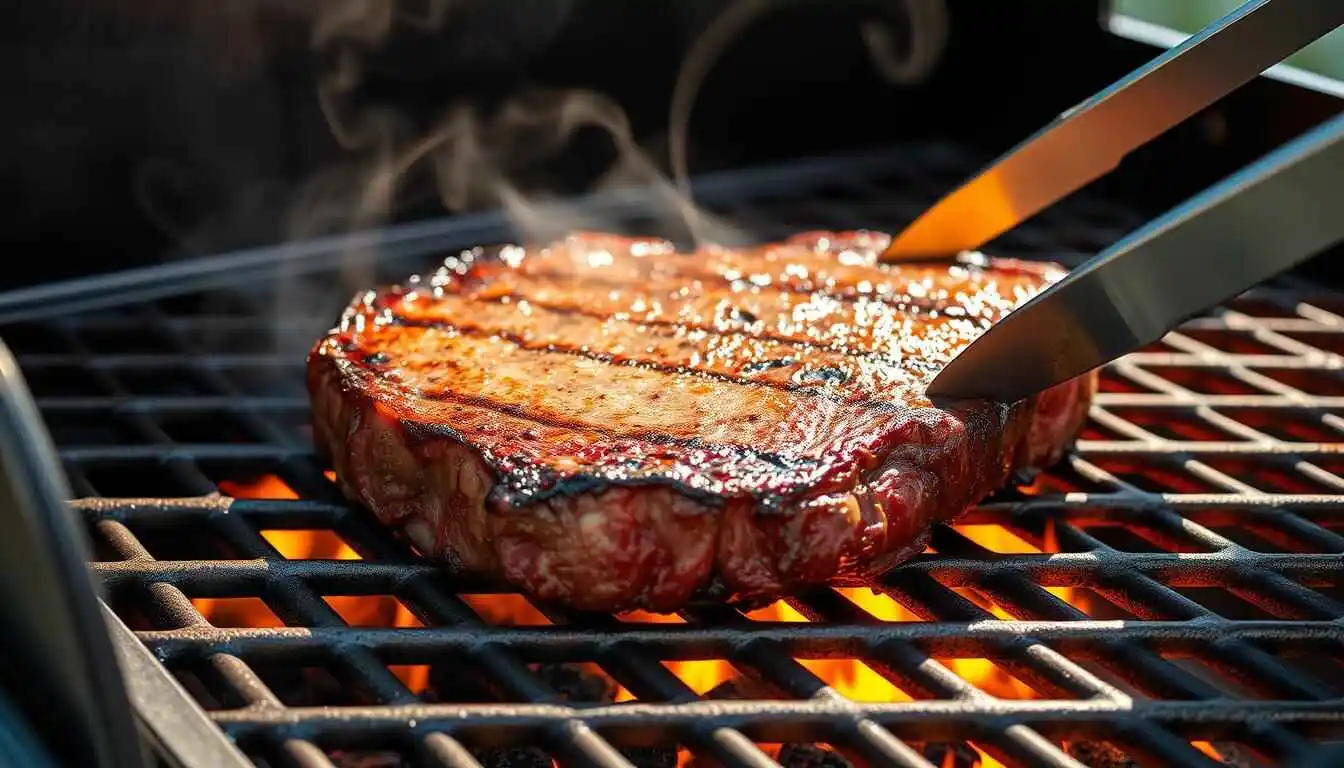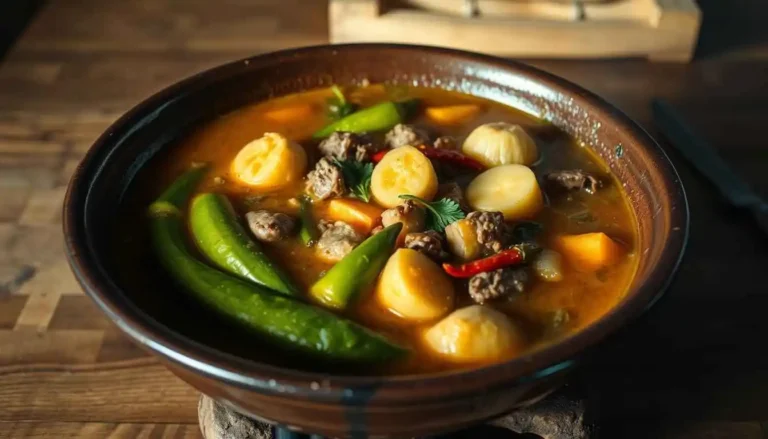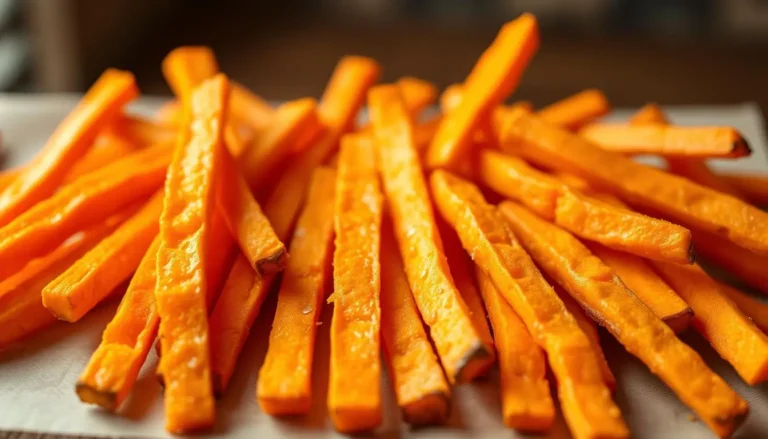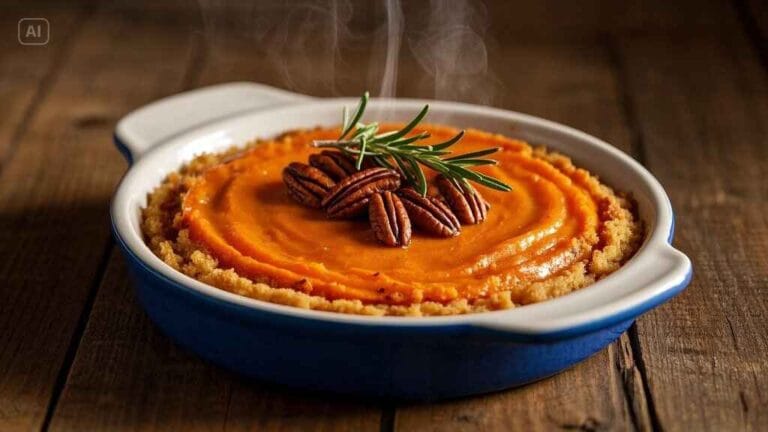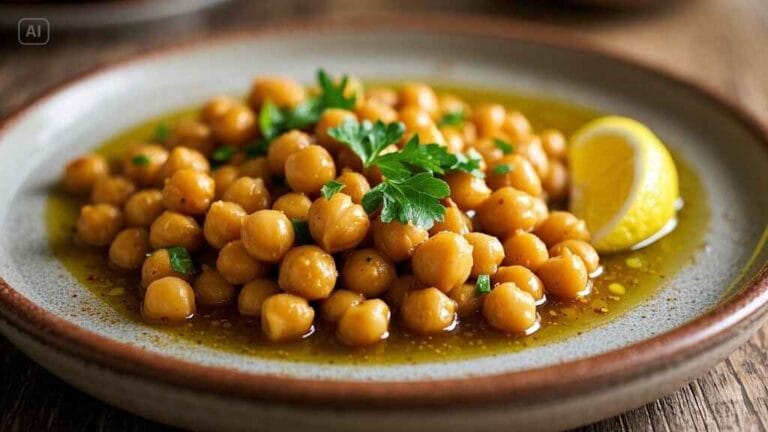How to grill ribeye steak on gas grill- Ultimate Guide
So, you want to learn how to grill ribeye steak on gas grill? To get a juicy, flavorful steak, you have to work at it. Whether you’re a first-time ribeye grill chef or adding this to your repertoire, mastering heat control, prepping the steak, and cooking times is crucial.
Table of Contents
A ribeye cooked on a gas grill can be easily controlled, allowing you to achieve a delicious steak consistently. Here’s how to prepare your perfect ribeye, from start to finish.

Following these steps will achieve one of the best grilled ribeye steaks you have ever made. It’s sure to wow your guests. First, review the fundamentals of seasoning your steak before placing it on the grill.
Understanding Ribeye Steak
Grilled ribeye steak is the ultimate favorite for grill enthusiasts. Cooking it well helps to know what makes it special. They carve up the ribbed section they used to serve at the Capitol Grill because the ribeye cut has tons of flavor and tenderness.
What Makes Ribeye Special
The ribeye steak is known for its marbling, the intramuscular fat that runs through the meat. This marbling creates a more flavorful, tender, and juicy steak.
When cooked, the fat melts. This distributes the flavor evenly, making every bite tasty.
One more reason the ribeye is special is its beefy richness. The rib section has additional fat, and consequently, more flavor, making it preferred for its highly beefy taste.
Choosing the Perfect Ribeye
Choosing the proper cut is crucial for grilling the perfect ribeye steak. Select steaks that are at least 1 to 1.5 inches thick. This allows for a good sear on the outside and even cooking on the inside.
Quality is also essential. Look for a ribeye with good marbling for a more flavorful and tender steak.
When buying beef, check the grade of the meat. USDA Prime or USDA Choice are also good options. Prime is the top grade and has abundant marbling. It is more expensive but tastes better and has a more textured flavor.
- Choose a thicker cut (1-1.5 inches) for optimal grilling results.
- Look for good marbling for flavor and tenderness.
- Note that USDA Prime is the superior choice among beef grades.
The Basic Gear You Need to Grill Ribeye
The proper setup is one of the best flavors for grilling a ribeye steak. First, prep your gas grill. The next step is to gather all the necessary tools for your perfect steak.
Preparation and Setup of Gas Grills
First, heat your grill to high heat, approximately 500°F to 550°F, and wipe the grates with a grill brush to remove any remaining food. This prevents your steak from sticking and helps achieve a good grill mark.
Once heated, lower the grill to medium-high and let it rise to Temperature. Check your burners and igniter to ensure they are functioning correctly. A clean grill makes your steak cook better, making grilling more enjoyable.

What You’ll Need: Tools and Accessories
To grill a ribeye, you need young-handled tongs. Long-handle the steak. Relax the steak. Check the steak’s Temperature; use a meat thermometer.. A grill brush is essential for cleaning.
More valuable items include a grill mat or basket to catch small pieces. One also needs a plate for the steak to rest on. This helps tenderize the steak and keep it moist.
- Tongs
- Grill spatula
- Meat thermometer
- Grill brush
- Grill mat or grill basket
Gas grilling ribs is quick, fun, and easy, but it requires practice and preparation to produce great ribs that will wow your guests.
Preparing Your Ribeye Steak
Yes, you’re reading that right, you begin with steps on how to grill a ribeye steak like a pro. Preparing the steak properly is essential for a juicy and delicious steak.
Allowing Steak to Come to Room Temperature
Remove your ribeye steak from the refrigerator and let it come to room temperature before grilling. This ensures even cooking. Allow it to come to room temperature for 30 to 45 minutes before grilling.
“You can’t cook a great steak if it comes straight out of the fridge,” the chef Gordon Ramsay once said. The difference is significant due to the room temperature.
Seasoning Options for Ribeye
When seasoning ribeye steak, Suffix expects you to be well-seasoned. Different seasonings can enhance the steak’s natural flavor. A powder mix is excellent.
For added flavor, try paprika, thyme, or rosemary. The intention is to reinforce the steak’s natural flavor, not cover it up.
Marinades vs. Dry Rubs
There are two types of seasoning: marinades and dry rubs. Marinades immerse steak in a liquid, while dry rubs are spices applied without a marinade.
Marinades impart flavor and moisture, but use them wisely. Dry rubs create a lovely crust, based on your preference.

With these steps, you’ll crank out a juicy ribeye on a gas grill that everyone will drool over.
How to Grill Ribeye Steak on Gas Grill: A Detailed Guide
Follow this guide to cook the perfect ribeye steak on a gas grill. There, it can become more straightforward as long as you pay attention to how to grill a well-done ribeye
How to Preheat Your Gas Grill the Right Way
It is essential to preheat your gas grill to ensure that it is cooking evenly. Turn the knob to high heat and heat for 10-15 minutes with the lid down. It helps to get a great sear on your steak.
How to Make Direct and Indirect Heat Zones
Control cooking with different heat zones on your grill and adjust the heat with multiple variable burners, offering direct and indirect heat options. This lets you sear your steak hot and cook it at a lower temperature.
Searing Techniques For Maximum Flavor
A seared ribeye steak is the key to achieving both flavor and texture. Cook over direct heat for 3-4 minutes per side, depending on the steak’s thickness. You want a nice crust.
- Pat the steak dry with paper towels before grilling, which helps improve browning.
- For better heat conduction, use a cast-iron or stainless steel grill mat.
- Don’t press down on the steak with your spatula; this squeezes out the juices.
Taking Internal Temperature
Test the internal Temperature of the steak. Check with a meat thermometer to ensure it’s cooked properly. Here are the temperatures for varying doneness:
- Rare: 120°F – 130°F
- Medium Rare: 130°F – 135°F
- Medium: 140°F – 145°F
- Medium Well: 150°F – 155°F
- Well Done: 160°F – 170°F
The Golden Hour ~ When Your Steak Comes Off the Grill at the Correct Temperature.
How to Tell When Your Steak is Done and Resting
How to Check the Doneness of a Perfectly Grilled Ribeye Steak. Whether you’re an old pro or still learning, getting it right matters for a great meal.
Doneness Level Temperature Guide (Fahrenheit)
Knowing the internal Temperature for the level of doneness you want is key to getting the perfect ribeye steak on a gas grill. Here’s a quick guide:
- Rare: 120°F — 130°F. The steak will be red and bloody, with a warm, red center.
- Medium Rare — 130°F — 135°F: A good balance between tenderness and flavor.
- Medium: 140°F – 145°F. A hint of pink in the middle of the steak.
- Medium Well: 150°F — 155°F. A trace bit of pink is left.
- Well Done: 160°F and above. The steak has been cooked thoroughly, with no pink at all.
Resting: The key to the perfect steak
After the ribeye is grilled to the correct doneness, the key is to let it rest. Letting it rest allows the juices to redistribute evenly throughout, making every bite tender and flavorful. Resting your steak means removing it from a hot grill and placing it on a plate or cutting board. Tent it loosely with aluminum foil to keep it warm, and let it rest for 5-10 minutes before slicing.
After following these tips, you will know how to grill a ribeye steak like a pro, whether a novice or a seasoned master. You will then have a perfectly cooked ribeye steak that will impress everyone.
Common Grilling Problems And Solutions:
There are tips and tricks for cooking a juicy ribeye steak on a gas grill and for troubleshooting common grill issues. However, no preparation or grilling method is foolproof, and vice can befall you: flare-ups, dry or tough steak, and uneven cooking.
Dealing with Flare-ups
Flare-ups can char the steak unevenly, giving it a burnt flavor. Clean your grill and trim off excess fat on the steak to reduce flare-ups. If a flare-up occurs, move the steak to the cooler side of the grill until the flames subside.
Preventing Dry or Tough Steak
Overcooking or not marinating enough can leave you with a dry or tough steak. To prevent this, monitor the internal Temperature carefully and use a marinade or dry rub to keep it moist and flavorful. Here’s a table of suggested internal temperatures for various levels of doneness:
| Doneness Level | Internal Temperature (°F) |
|---|---|
| Rare | 120-130 |
| Medium Rare | 130-135 |
| Medium | 140-145 |
| Medium Well | 150-155 |
| Well Done | 160-170 |
Fixing Uneven Cooking
One reason for uneven cooking could be that the heat is not evenly distributed on your grill. Ensure your grill is preheated correctly and set up with direct and indirect heat zones to address this issue. Grill the steak with direct heat, then transfer it to indirect heat for more even cooking.
Using These Troubleshooting Tips, You Can Troubleshoot Common Grilling Problems and Perfectly Cook a Ribeye Steak on a Gas Grill.
Pairings and Flavor Enhancements
A sublime rib, cooked correctly, should have stellar sides to round out the dish. You can never go wrong by adding compound butters and sauces to complete your meal. And accompany it with complementary side dishes.
Compound Butters and Sauces to Match
Compound butters and sauces add depth to your steak’s flavor. Consider adding a garlic herb butter or peppercorn sauce for an extra layer of flavor. Mix and match to find the ideal choice for grilling a ribeye steak like a pro.
Born to Be Grilled: Great Ribsides Dishes
Selecting the right sides can enhance your dish. Grilled vegetables and salad pair well with ribeye. Select from various textures and options to create a complete meal.
Note: Your perfect grilled ribeye steak will be stellar with these tips. During their meals, they are both delicious and unforgettable.
Conclusion
Now you know how to grill a ribeye steak. It may not look easy, but with practice, you’ll become effective and make delicious steaks in no time.
First, pick the best ribeye. Next, prepare your gas grill. Remember to season your steak correctly. This guide will ensure you achieve a perfect crust and juicy interior.
So, try various seasonings and sauces to discover your favorite. Over the years, you will become an expert griller, able to impress your friends and family with your skills.
FAQ
How to Grill Ribeye Steak on a Gas Grill?
Grilling a Ribeye Steak—: Reheat the gas grill on high. A Season the steak with your favorite spices. Then, sear for 3-4 minutes on each side.
“As soon as the steak is seared, move it to a cooler section of the grill. This will allow it to cook to your desired doneness.
What is the secret to a perfect ribeye?
If you want a perfect sear, ensure your grill is hot. Clean and oil the grates. Sear the steak for 3-4 minutes per side, until a nice crust develops.
What Internal Temperature Should Steak Be?
The Perfect Internal Temperature for Steak (by Doneness) Rare — 130-135°F Forum — 135-140°F
For medium, it’s 140–145°F. And for well-done, 160°F or above.
How long should I let my grilled ribeye steak rest?
Rest your ribeye steak for 5-10 minutes after grilling. This helps the juices redistribute, making it more tender and flavorful.
Is it okay to marinate ribeye steak before grilling it?
You can marinate your ribeye steak. Marinating and drying it with paper towels before grilling will help prevent flare-ups.
What are common mistakes to avoid when grilling ribeye steak on a gas grill?
Some mistakes include not preheating the grill sufficiently and not seasoning the steak properly. Also, please refrain from pressing the steak down with your spatula; let it rest after grilling.
How can I prevent flare-ups when I grill a ribeye steak?
To avoid flare-ups, trim any excess fat from the steak, keep the grill grates clean, and don’t press down on the steak with your spatula.
Is it possible to grill a well-done ribeye steak on a gas grill?
Can a ribeye be grilled to a well-done level on a gas grill? It can, however, dry out and become tough. To avoid this, a thermoset seat is introduced (the internal Temperature Is 160°F).
Use a lower heat setting to prevent it from overcooking.
Tried This Recipe? Tell Us What You Think!
There are no reviews yet. Be the first one to write one.

